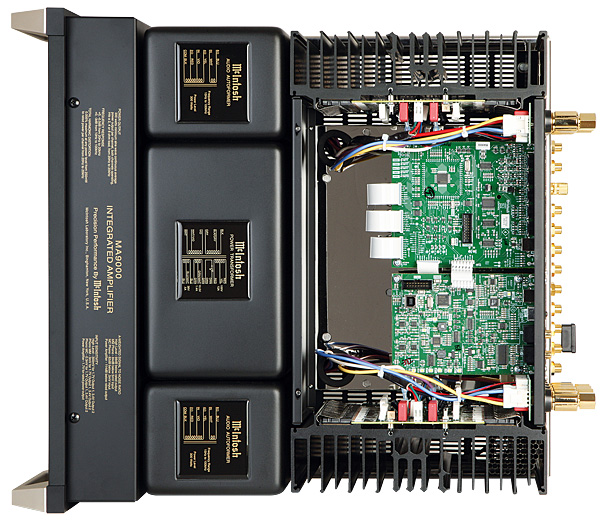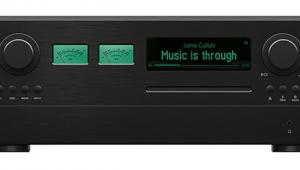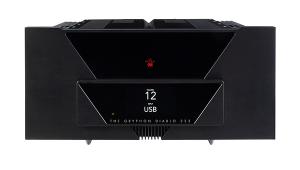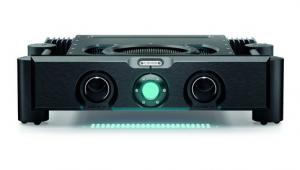McIntosh MA9000 integrated amplifier/DAC Page 2
![]() Tubey Impressions
Tubey Impressions
Initial impressions of the MA9000 were somewhat underwhelming, whether used with its USB input fed from PM’s in-house Melco N1ZS20/2 server [HFN Jun ’17], or with the mighty dCS Vivaldi One player/DAC [HFN Feb ’18] inserted between the two to feed the amplifier’s analogue inputs. Playing through the B&W 800 D3 loudspeakers [HFN Oct ’16], as usual ruthlessly revealing of what’s happening upstream of them, the amp sounded more like a caricature of what many consider to be the ‘valve sound’, rather than an effortlessly powerful solid-state design.
The overall impression was of laziness with a vague rendition of recordings known to be good, less than precise imaging, a recessed soundstage and so-so instrumental timbres, with basses and drums in particular sounding boomy, hollow and poorly defined.
Turning The Tap
Playing the track ‘In The Mountains’, from the Espen Eriksen Trio’s Never Ending January [Rune Grammofon RCD 2173], I was particularly struck by the ‘drumming on plastic barrels’ effect with Andreas Bye’s usually taut percussion, while the great atmospheric Royal Festival Hall organ sound at the opening of Emerson, Lake & Palmer’s ‘The Three Fates’, from the band’s eponymous debut album [Atlantic 781 519-2] was again rather anonymous and lacking in impact. This was not good, and some head-scratching ensued – I was beginning to wonder whether something somewhere in the chain had put one channel out of phase with the other, so pronounced was the effect.

The solution, when it came, was somewhat unexpected: it seems that while the transformer output of the amp does a good job of maintaining equal power whichever setting you choose, care is required when selecting the best ‘tap’ for the speakers in use. In set-up we’d selected the 4ohm setting for the B&W speakers, but things livened up remarkably when we switched to the 8ohm output.
Suddenly the life came back into the music. The MA9000 remained on the big, rich and bold side of neutral, but a vivid energy was injected back into drums and basses, giving them timing and definition. The soundstaging tightened up too, taking on focus and three-dimensionality, and the ambience and characteristic growl flooded back into the mighty RFH organ on the Emerson, Lake & Palmer track.
 OK, so 4ohm tap bad, 8ohm good? Not quite – in practice it’s more a question of not making assumptions about the correct speaker output to use, whether based on nominal or minimum impedance claims, or just guesswork. Rather, the sensitivity of the interaction of the chosen output on the MA9000 with the partnering speakers suggests some experimentation is required in order to settle on the best sounding output tap.
OK, so 4ohm tap bad, 8ohm good? Not quite – in practice it’s more a question of not making assumptions about the correct speaker output to use, whether based on nominal or minimum impedance claims, or just guesswork. Rather, the sensitivity of the interaction of the chosen output on the MA9000 with the partnering speakers suggests some experimentation is required in order to settle on the best sounding output tap.
That done, I enjoyed a wide range of music through the big amplifier, also discovering the analogue equaliser to be very subtle in its operation, if best left bypassed for critical listening. The amp showed itself capable of dramatic punch with the likes of the Britten ‘Sea Interludes’, from the classic Decca recording of Peter Grimes [414 5772], and extreme subtlety in Lake Street Dive’s spare reading of ‘I Want You Back’, from Fun Machine [Signature Sounds SIG2032], with excellent shaping of bass, percussion, trumpet and voice.
Digital Drama
The onboard digital stage, while excellent, lacks some of the subtlety heard when using the analogue inputs – hardly surprising, with £55k of dCS’s finest supplying the tunes – but has both drama and refinement in its favour, especially when using the USB Type B input to play ultra-high-resolution tracks. In the absence off an offboard super-DAC to feed the MA9000, it’s more than up to the job, enabling users to enjoy all that this excellent amplifier can deliver whether with analogue or digital sources.
Yes, this huge integrated is more than a match for many a very good pre/power combination.
Hi-Fi News Verdict
Get beyond the sensitive interaction between speakers and its range of output taps, which requires some experimentation, and the MA9000 reveals itself to be a very serious amp indeed – from effortless power delivery and control to its cunningly-concealed flexibility of set-up and operation. It may not be everyone’s idea of a no-compromise amp, but it has the performance to back up its considerable size and mass.

















































